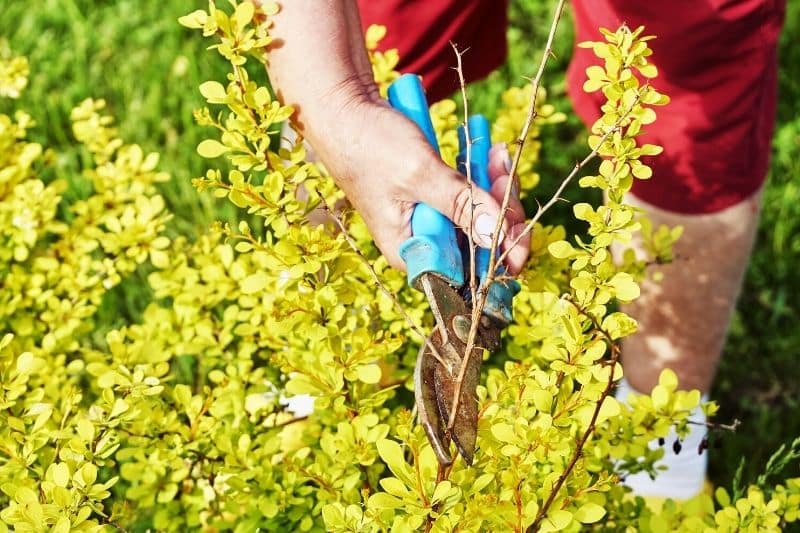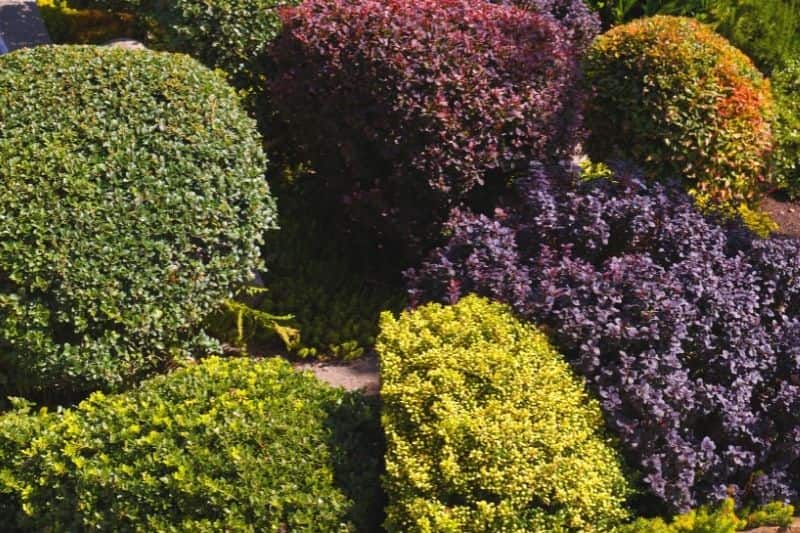Berberis are magnificent bushes, very useful for creating a defensive hedge or for adding colour to a shrub and perennial border. The attractive coloured foliage of deciduous varieties also stands out in a rockery or at a border. Evergreen varieties are notable for abundant flowering that will then produce ornamental berries favoured by birds. This bush is easy to grow, requires no maintenance and tolerates pruning perfectly.
Discover our tips and technique to successfully prune Berberis in the garden.

Overgrown and unsightly branches can be removed with pruning shears
Why pruning Berberis?
Easy to grow, Berberis is a bush with a naturally dense, bushy habit. Grown in a border or as a loose hedge, it does not require pruning. However, it can be pruned to create a neat hedge or simply to limit its size. This small bush also forms into a ball to accompany box and other topiary plants. You can also remove old branches or carry out severe pruning to rejuvenate a specimen or encourage it to become denser. Be careful, this operation will prevent flowering for 2 years. Flowering occurs on stems aged 2 years.
When to prune Berberis?
For evergreen varieties, carry out a light balancing pruning after spring flowering, between May and July. Removal of the oldest branches should be done every 3 or 4 years, except on cultivars 'Darwinii' and 'Stenophylla'.
For deciduous varieties, hedge pruning is carried out at the end of winter, around March, before new growth begins. Berberis tolerates pruning well, so the operation can be repeated every year, or even more often to encourage foliage. You can also cut back old shoots severely and even cut the bush right down to its base every 3 to 4 years during winter.

Remove dead branches from your Berberis with pruning shears
How to prune Berberis?
Tools required
Wear thick gardening gloves and covering clothing to protect yourself from Berberis's thorny branches. To cut branches, you will need a pruning shear, a shear, or even a lopper to remove old shoots. Remember to disinfect tools with alcohol before use to avoid transmitting diseases from one plant to another. For linear hedge pruning, you can use garden string stretched between two posts.
Balancing pruning
Cut back overly vigorous branches or those that spoil the shape of your Berberis using pruning shears or shears. This will produce a bush with a rounder, denser habit. If you want fruiting, do not remove all flowering shoots.
Maintenance pruning
Remove dead, dried shoots at their base or at a junction with your pruning shears or a lopper.
Formal hedge pruning
Pruning Berberis as a hedge is mainly done with shears or a hedge trimmer. To form a straight hedge, use a cord. Plant a large stick or a stake at each end of the hedge. Stretch garden string between the two posts at the desired cutting height. Trim your Berberis following the string with your shears. You can also hang a plumb line for a perfect vertical cut.
Rejuvenation pruning or severe pruning
Severe pruning rejuvenates an old specimen and can be done every 3 to 4 years, mainly on deciduous-leaved Berberis. Using a lopper and pruning shears, cut old branches back to the stump. Although Berberis is not demanding, you can add well-rotted compost at its base to help its recovery in spring. Note that you will not have flowering or fruiting during the two years following this severe cut.

Pruned Berberis will add colour alongside box in a topiary garden
To learn more:
- Discover all our varieties of Berberis
- Find our article to learn all about Berberis: planting, pruning and maintenance
































Comments